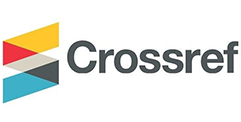Understanding The Philosophy Of Buot-Loob-Nakem
DOI:
https://doi.org/10.57106/scientia.v6i2.75Keywords:
Boot, Loob, Nakem, Inner Self, Metalinguistics, Philosophy of LanguageAbstract
What is loob, buot, nakem and its other Philippine counterparts? We think that the English translation equivalent is the inner self. This inner self embraces loob as the intellect, will, the feelings. They are also connected to the physical. Kalooban embraces
the entire self. It is holistic and interior. It is non-compartmentalized. In other words, kalooban is the inner self.
We have three concentric circles pertaining to the inner self, starting from the outermost, namely, body, soul and spirit. These three components are not compartmentalized but act as one. In the second concentric circle, the Filipino does not compartmentalize thinking, willing, feeling, and being ethical. In the third concentric circle again we see here the principle of holism, that kalooban embraces the holistic inner self.
References
Alejo, E. Albert. 1990. Tao po! Tuloy!. Quezon City: Office of Research and
Publications, Ateneo de Manila University.
Batoon, Emmanuel D. 2014. “Tracing Mercado’s Anthropology Perspective”
(Second of Two Parts). Ktritike (December 2014, vol. 8, no. 3.
Mercado, Leonardp N.
1972. “Reflections on Buut-Loob-Nakem,” Philippine Studies 20 :577-601.
1974. Elements of Filipino Philosophy. Divine Word University Publications.
1988. “Power and Spiritual Discipline Among Philippine Folk Healers.” Melanesian
Journal of Theology vol. 4, no. 3, pp. 51-63
1991 “Soul and Spirit in Filipino Thought.” Philippine Studies 39:287-302.
1994. The Filipino Mind, Philippine Philosophical Studies. Washington DC:
The Council for Research in Values. Also Manila: Divine Word Publifcations.
Miranda, Dionisio M. 2003. Kaloob ni Kristo, a Filipino Christian Account of
Conscience.
Panganiban, Jose Villa. 1972. Diksyunaryo-Tesauro Pilipino-Ingles. Quezon
City: Manllapaz Publishing Co.
Wolff, John U. 1972, A Dictionary of Cebuano Visayan. Special monograph issue
of the Philippine Journal of Linguistics











